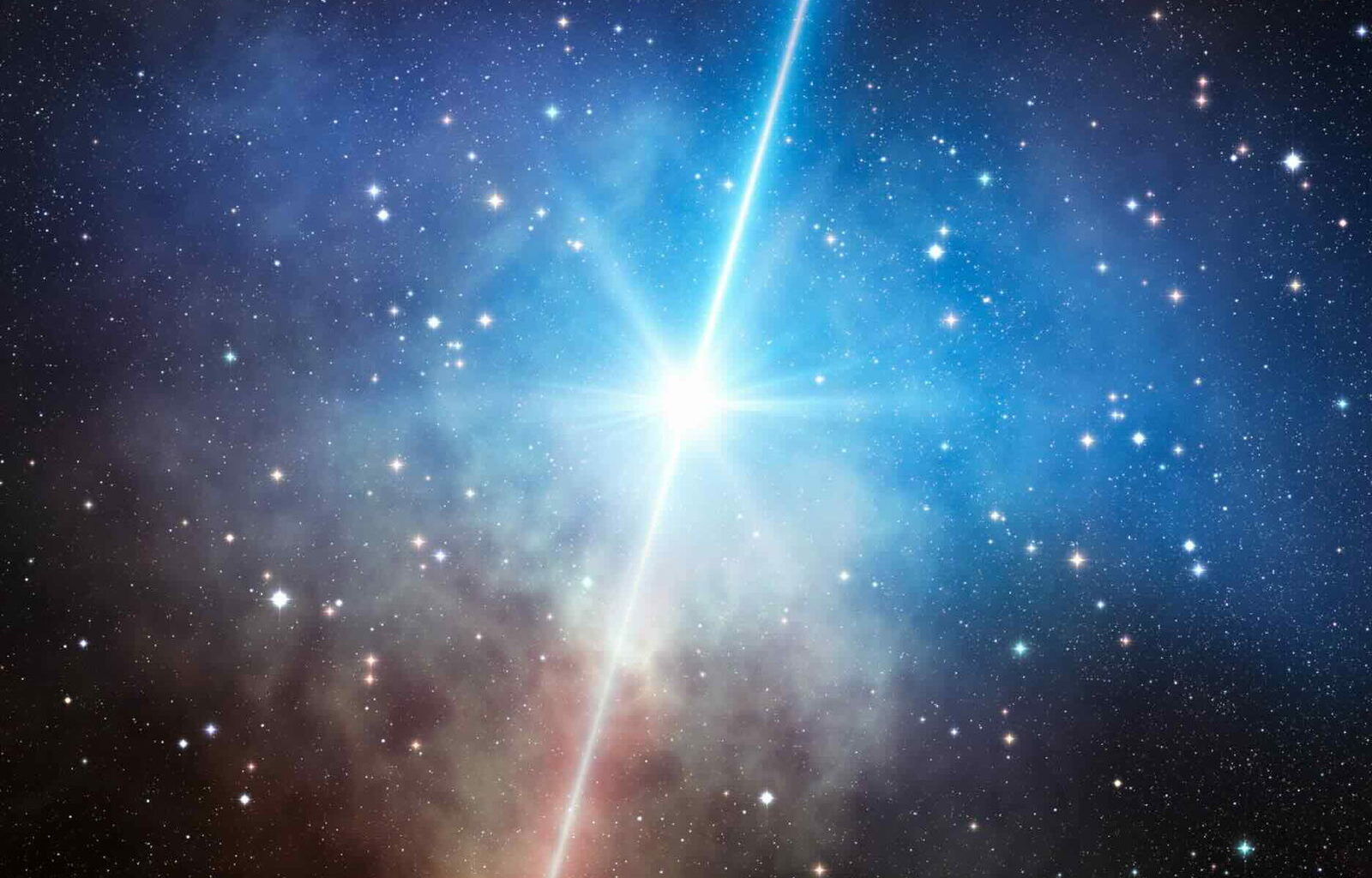When gazing at the night sky, it feels timeless, with seemingly limitless stars glimmering as they have for billions of years. However, a new study suggests our universe may not be destined to continue expanding forever. Instead, it may eventually collapse back in on itself, ending in a dramatic “big crunch” roughly 20 billion years from now.
The study, published in Journal of Cosmology and Astroparticle Physics and co-authored by researchers at Cornell University, the Donostia International Physics Center in Spain, and the Tsung-Dao Lee Institute in Shanghai, proposes that an exotic form of dark energy known as an “ultralight axion” combined with a negative cosmological constant may dictate the universe’s fate.
The team’s analysis of the latest Dark Energy Survey (DES) and Dark Energy Spectroscopic Instrument (DESI) data suggests a surprisingly finite cosmic lifetime, roughly twice as long as the 13.8 billion years that have already elapsed since the Big Bang.
“For the last 20 years, people believed that the cosmological constant is positive, and the universe will expand forever,” co-author and professor of physics at Cornell, Dr. Henry Tye, said in a press release. “The new data seem to indicate that the cosmological constant is negative, and that the universe will end in a big crunch.”
Since the late 1990s, cosmologists have understood that the universe’s expansion is accelerating, a discovery attributed to a mysterious force called dark energy. The simplest model, known as ΛCDM, or Lambda-CDM model, assumes a positive cosmological constant (Λ) and predicts infinite expansion. However, DES and DESI’s high-precision measurements have unsettled that picture. They indicate the dark energy equation of state may differ significantly from the textbook value of w = −1.
Enter the “axion dark energy” (aDE) model explored in this new study. By combining a negative cosmological constant with an ultralight axion field, a hypothetical particle often invoked in string theory, the model can reproduce DES and DESI’s results more accurately than the standard ΛCDM. Significantly, it implies the universe’s expansion will one day halt and reverse.
“With the best-fit values for the parameters of the model, we find that the lifespan of the universe is 33.3 billion years; that is, the universe will end in about 20 billion years,” the researchers note.
That estimate places the onset of contraction, when the cosmic scale factor reaches its maximum, about 11 billion years from now, followed by a rapid “big crunch” phase lasting roughly a quarter of the remaining lifespan.
Researchers emphasize that DESI’s northern-hemisphere data and DES’s southern-hemisphere results converge at a 4.2-sigma level on w ≠ −1. That’s strong enough to warrant serious attention, though still short of physics’ gold standard of 5-sigma certainty. If future surveys confirm these measurements, the aDE model could supplant ΛCDM as the dominant cosmological framework.
The axion in this model behaves differently at different times in cosmic history. In the early universe, it’s effectively frozen, mimicking a cosmological constant. Later, as the Hubble parameter falls below the axion’s mass, the field “rolls” down its potential, converting vacuum energy into matter-like energy density. This evolution naturally shifts the dark energy equation of state above −1, aligning with DESI’s observations.
However, the real twist comes from the negative cosmological constant. In the paper’s approximate model, once the scale factor hits its maximum value, predicted at a = 1.69, the Hubble parameter crosses zero. It turns negative, signaling the onset of the “big crunch.” The universe’s final act accelerates as matter and radiation compress, potentially triggering an era of intense black hole mergers before all structure collapses into a singularity.
For now, the aDE model remains a hypothesis, albeit one with intriguing statistical support. The authors openly acknowledge the significant decline in their parameter space and the need for improved data.
“It is crucial that the DES/DESI observation is confirmed and the aDE model is rigorously tested,” the researchers write. “Fortunately, a number of projects measuring different aspects of dark energy are forthcoming in the near future.”
These future projects include next-generation surveys of baryon acoustic oscillations, supernovae, and cosmic microwave background polarization, all of which can tighten constraints on w(a), the dark energy equation of state over time. If, indeed, the signal for a negative Λ holds, cosmology textbooks may need a significant revision.
Beyond observational cosmology, the study has implications for deeper theoretical ideas. String theory has long hinted that building a stable vacuum with positive Λ, like today’s dark energy, is difficult, whereas vacua with negative Λ arise more naturally.
In that sense, the aDE model dovetails with the so-called “string theory landscape” picture, which envisions a multiverse of possible vacua. Our universe might simply be heading toward a more generic state.
The paper also highlights the “axiverse,” or the notion that multiple ultralight axions of different masses populate the cosmos. The researchers note that adding an even lighter axion could further lower Λ, reinforcing the big crunch scenario. These insights, if verified, could provide rare observational windows into the otherwise abstract mathematics of string theory.
Although 20 billion years sounds unimaginably distant, the paper draws an interesting local connection. Our own Milky Way is predicted to collide with the Andromeda galaxy within about 4 to 10 billion years.
Depending on the timing of the universe’s turnaround, the two galaxies’ merger may occur under very different cosmic conditions than previously assumed. In the extreme scenario, the universe could already be slowing its expansion as the collision unfolds.
And while the big crunch phase is brief on cosmic timescales, it would be catastrophic. As the scale factor shrinks, matter density skyrockets, potentially leading to the formation of giant black holes that “shield” or “hide” the final singularity.
The authors refrain from speculating on whether quantum effects might enable a bounce into a new cycle. Still, they caution that any such reincarnation would produce a universe very unlike ours.
The new study doesn’t mean the end is necessarily near. Humanity still has at least 20 billion years before cosmic contraction begins, if the model is correct. However, it does underscore the dynamic and uncertain nature of our understanding of dark energy. For decades, ΛCDM seemed invulnerable. Yet, now high-precision data are cracking its foundations.
If confirmed, the aDE model’s prediction of a finite cosmic lifespan would mark one of the most profound shifts in cosmology since the discovery of the universe’s accelerated expansion. It suggests not an endless, cold fade into darkness but a massive, fiery big crunch back to the conditions of the Big Bang.
“For any life, you want to know how life begins and how life ends – the end points,” Dr. Tye said. “For our universe, it’s also interesting to know, does it have a beginning? In the 1960s, we learned that it has a beginning. Then the next question is, ‘Does it have an end?’
“For many years, people thought it would continue indefinitely,” Tye concludes. “It’s good to know that, if the data holds up, the universe will have an end.”
Tim McMillan is a retired law enforcement executive, investigative reporter and co-founder of The Debrief. His writing typically focuses on defense, national security, the Intelligence Community and topics related to psychology. You can follow Tim on Twitter: @LtTimMcMillan. Tim can be reached by email: tim@thedebrief.org or through encrypted email: LtTimMcMillan@protonmail.com


